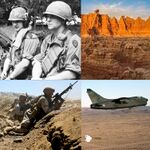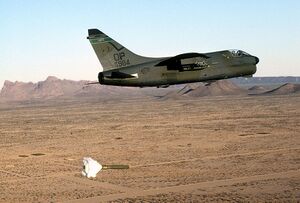Dakotan Theatre: Difference between revisions
No edit summary |
No edit summary |
||
| Line 46: | Line 46: | ||
==== Montanan, Yankee, and Canadian Civilian Deaths ==== | ==== Montanan, Yankee, and Canadian Civilian Deaths ==== | ||
Midwestern forces ran into Canadian claimed territory (former Montana, now Lakota) | Midwestern forces ran into Canadian-Commonwealth claimed territory (former Montana, now Lakota) | ||
===The Ottawa Treaty=== | ===The Ottawa Treaty=== | ||
| Line 56: | Line 56: | ||
== International Reaction == | == International Reaction == | ||
[[File:DakotaRuins.jpg|thumb|Dakaton Nationalist outpost ruins | The United Commonwealth declared official neutrality, along with the Western States of America, although condemning the invasion as 'disgusting'.[[File:DakotaRuins.jpg|thumb|Dakaton Nationalist outpost ruins. Suspected of containing a weapons cache, it was bombed. None of the suspected weapons were found and 5 bodies were recovered, 2 of them unarmed women. |left]] | ||
=== Civilian Deaths === | |||
The Midwest Union was accused of indiscriminately bombing both rural and urban housing without proper screening for non-combatants. | |||
=== Justification === | |||
Multiple Warsaw Pact members have offered justification for both the Dakotan Theatre and civilian deaths, arguing for a greater good. Leaked Soviet documents presented up at the [[2005 American Convention]] implied that the Pact member nation regiments deployed in Dakota were employing the operations as training for a larger invasion of American nation-states and Indo-European countries. | |||
== Current Terrorist Cells == | == Current Terrorist Cells == | ||
[[Category:Divided States of America]] | [[Category:Divided States of America]] | ||
[[Category:Conflicts in the Former United States of America Post Dissolution]] | [[Category:Conflicts in the Former United States of America Post Dissolution]] | ||
Revision as of 18:04, 21 October 2024
| Dakotan Theatre | ||||||||||
|---|---|---|---|---|---|---|---|---|---|---|
| Part of the Collapse of the United States | ||||||||||
|
Top to Bottom, Left to Right: Midwestern soldiers at Camp Fargo, the Badlands, Midwestern special forces entrenched, Midwestern bomber. | ||||||||||
| ||||||||||
| Belligerents | ||||||||||
| Dakotan Supporters | Dakotan Nationalists | De Jure Militia | ||||||||
| Commanders and leaders | ||||||||||
|
| ||||||||||
The Dakotan Theatre refers to the Midwest Union's 1986 annexation of Western Minnesota and the Dakotas approximately East of the Missouri River. Operations began on July 4th, 1983, although scouting had been active since March.
Pre Threatre
Camp Fargo
Camp Watertown
Unclaimed Dakota Invasion
The Missouri Line
Trespassing on Reservations
Post Missouri Line
Missouri River Barge Incident
Montana Invasion
Operation Prairie Dog
Montanan, Yankee, and Canadian Civilian Deaths
Midwestern forces ran into Canadian-Commonwealth claimed territory (former Montana, now Lakota)
The Ottawa Treaty
| Type | Border Establishment |
|---|---|
| Drafted | July 1st, 1985 |
| Signed | July 17th, 1985 |
| Location | Ottowa, Canada |
| Mediators | USSR, Japan, and The United Kingdom |
| Parties |
|
Officials gathered in Ottawa and decided on bordering the nations along the Missouri River.
International Reaction
The United Commonwealth declared official neutrality, along with the Western States of America, although condemning the invasion as 'disgusting'.
Civilian Deaths
The Midwest Union was accused of indiscriminately bombing both rural and urban housing without proper screening for non-combatants.
Justification
Multiple Warsaw Pact members have offered justification for both the Dakotan Theatre and civilian deaths, arguing for a greater good. Leaked Soviet documents presented up at the 2005 American Convention implied that the Pact member nation regiments deployed in Dakota were employing the operations as training for a larger invasion of American nation-states and Indo-European countries.



